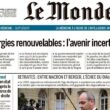Exhibitions. The UK-based Informa Plc last year became the world’s largest trade show organiser with its £4bn acquisition of UBM. This week, it reported like-for-like operating profit increases of 8% in the first six months of 2019. Investors were cheered by the successful integration of UBM (give or take some wobbles with the former Advanstar fashion trade shows) and, even more so, by the 7% increase in dividends. The share price also jumped 7% to a year-long peak.
Informa Markets (the trade show division) had the best growth and accounted for more than 50% of revenue during the half-year and 60% of the operating profit, with a margin of 35%. It now has more than 550 trade shows with 40% of revenue coming from North America, 30% from Asia, and 10% from the Middle East. It’s a real transformation from a decade ago when more than 30% of Informa events revenue came from the Middle East alone. It begs the question: When will the market leader decide to concentrate only on exhibitions – with or without some of its ancillary events and information services?
We might expect the £11bn Informa to divest its attractive £500m-revenue STM publishing, sooner or later, because:
- It is the second largest division but the which has no obvious synergies with the flagship exhibitions group
- It has the second lowest growth rate
- The company has recently revived the Taylor & Francis name for the division – as if to indicate its potential separation from Informa Tech, Informa Connect, Informa Markets, and Informa Intelligence
But there is another reason. One prospective buyer for Taylor & Francis (T&F) would be none other than RELX whose own STM publishing accounts for 30% of total revenue. It’s the same company whose Reed Exhibitions is even more obviously non-core than T&F and is the smallest division in RELX with the lowest margins. It had long been the pioneering global exhibitions leader – until Informa swallowed UBM in 2018. Despite the speculation, RELX has always denied it would sell its exhibitions, but the Taylor & Francis opportunity might be just too good to resist.
Informa would kill for a chance to acquire the £1.2bn-revenue Reed Exhibitions because:
- It would create a £3bn-revenue exhibitions group, consolidating Informa’s global leadership but with not much more than a 10% market share of the $29bn market (source: AMR/Globex). So, it should be able to get past most regulators with or without some individual divestments
- Reed’s operating profit margins are just 25% (among the lowest of the principal exhibition groups) compared with Informa Markets’ 35%. Hiking the margins could be the prize for cutting Reed’s long tail of smaller shows and reducing overheads. Some rivals think they could increase Reed annual profits by £50-75m – which would push its margins up to something like 30%
- It could probably achieve this transformative deal in exchange for T&F and, perhaps, £2bn of cash (assuming Reed Exhibitions has a value of, say, £5bn and T&F £3bn)
While the Blackstone-owned Clarion Events and a whole raft of private equity firms would also fight to get into an auction for Reed Exhibitions, Taylor & Francis could be Informa’s trump card.
This month, Informa is exchanging its Agribusiness Intelligence (and $30m cash) for IHS Markit’s TMT brands. The deal might almost be a test of what would be involved in a much larger swap with RELX.
If Informa does acquire what is its largest exhibitions competitor, the combination would be the runaway market leader in the best performing media market of all. As a pure-play trade show group, it would be rated even more highly by investors than the current mix of publishing and events. And RELX would finally become exactly what it has long claimed to be: “A global provider of information-based analytics and decision tools for professional and business customers”. A real win-win. Are you ready?
The real reason why the ultimate exhibitions merger may happen in the slipstream of Covid is that these two UK-owned companies are highly complementary:
- Of the estimated 450 exhibitions markets served by the companies, fewer than 13% are contested both by Informa and Reed. Some 24% are (more or less) Informa only and 63% are Reed only. There does not appear to be a single mainstream market where Reed is no.1 and Informa no.2 or vice versa
- Informa’s top five events are in: pharma ingredients; healthcare; fashion; power; and construction. Reed’s are in: medical devices; travel; interiors; electronics; and heating & ventilation.
- Reed has some exceptional businesses like in Japan, where it’s the market leader and may generate 10% of its trade show revenue and profit. It also has strong positions in France (15% of revenues, including Midem), Germany (10%), Brazil (7.5%), and Austria (7.5%)
- Informa generates some 70% of its revenue in North America and Asia, almost double that of Reed
- Reed Exhibitions generates 29% of its revenue from visitors and 71% from exhibitors. Informa is 12% visitors, 80% exhibitors and 8% sponsorship. They’ve got something to learn from each other.
The two companies are a near-perfect fit and the combined group (based on pre-Covid 2019 results) would have a neatly balanced 25-30% of revenues in each of Europe, the Americas, and Asia. Neither of these two UK-owned exhibitions companies has much activity in their sluggish home market: just 4% of the combined trade show revenue. That too is a strength.
Further, the “new” global exhibitions market leader would have a combined market share of some 10%, nothing to worry the regulators. But the company would be five times the size of its nearest competitor.
B2B exhibitions were once largely owned by non-profit trade associations, as they often still are in the US. But global exhibitions ownership is now dominated by European companies which account for the world’s three largest organisers and seven of the top 10.




